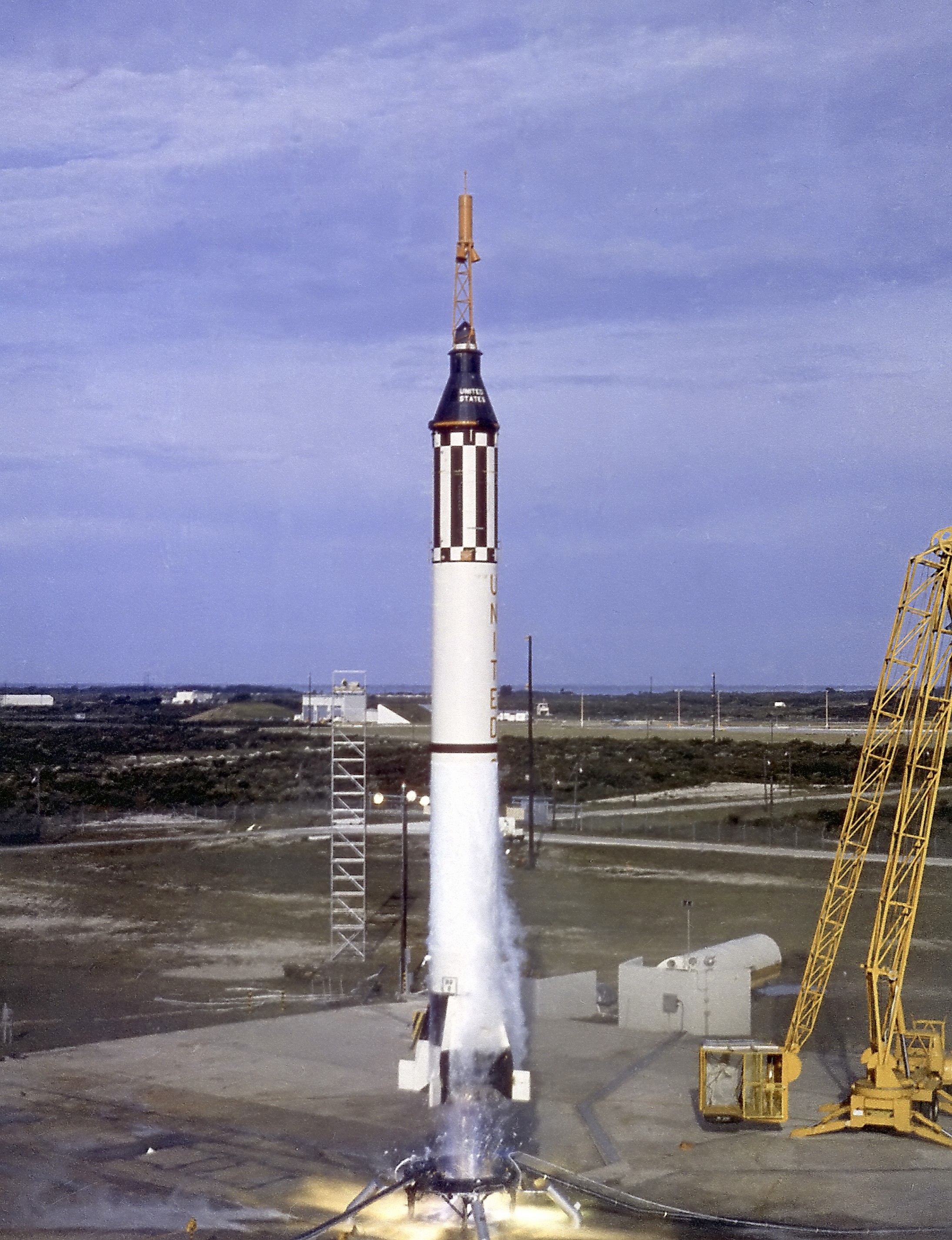
21 July 1961: At 7:20:36 a.m. Eastern Time (12:20:36 UTC), NASA Astronaut, Captain Virgil Ivan (“Gus”) Grissom, United States Air Force, was launched from Launch Complex 5, Cape Canaveral Air Force Station, Florida, aboard Mercury-Redstone 4.
This was the second manned flight of Project Mercury. Grissom’s Mercury space craft was named Liberty Bell 7. The Mercury space craft was a one-man capsule built by McDonnell Aircraft. The Redstone launch vehicle was a highly-modified version of a liquid-fueled U.S. Army ballistic missile.
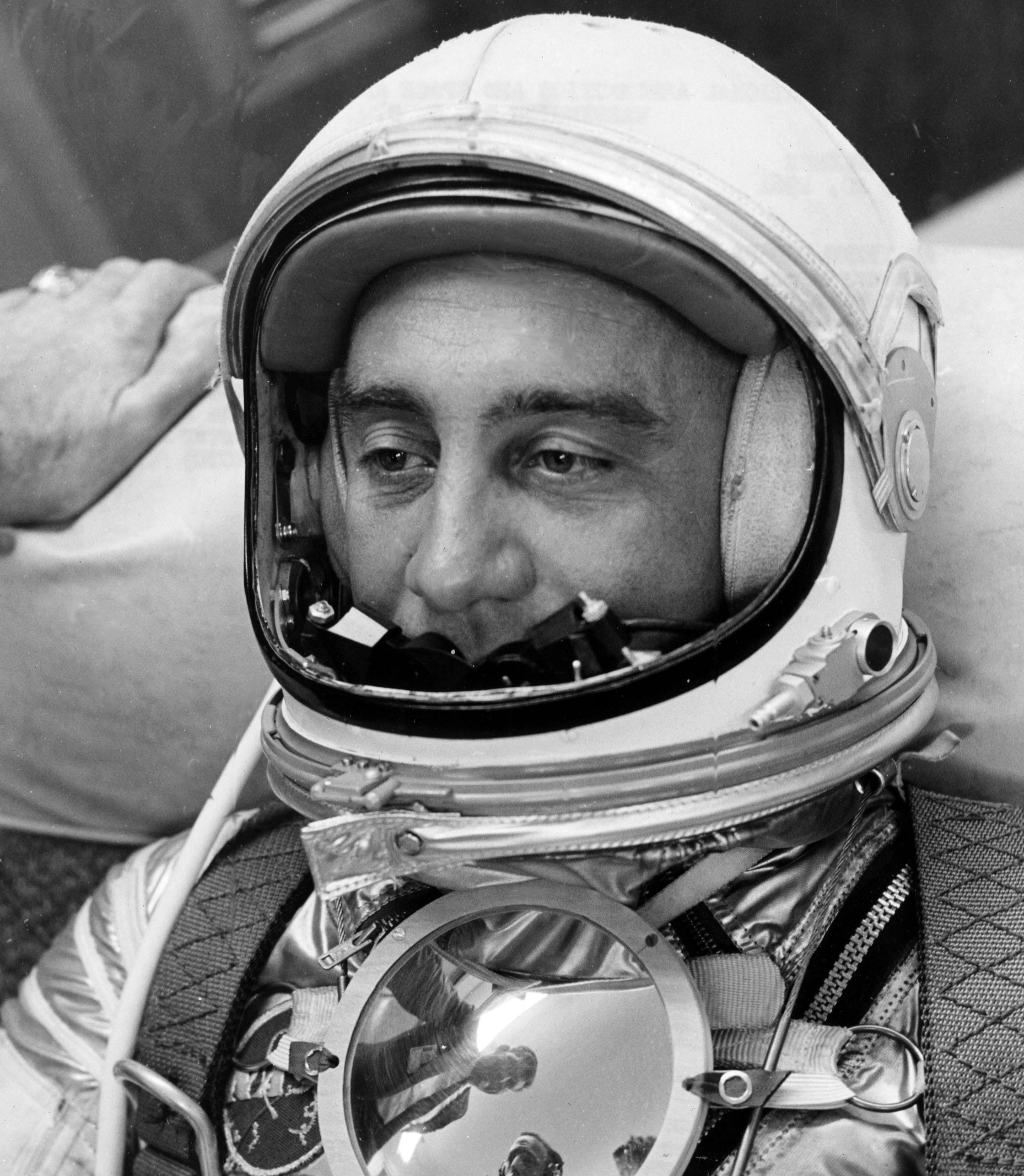
The Redstone rocket accelerated to Mach 6.97 (5,168 miles per hour, 8,317 kilometers per hour). Grissom experienced a maximum 6.3 gs of acceleration on climbout.When the booster engine shut down, the Mercury capsule was released and continued upward on a ballistic trajectory. The peak altitude reached by Liberty Bell 7 was 102.8 nautical miles (118.3 statute miles, or 190.4 kilometers). The maximum velocity, relative to Earth, was 6,618 feet per second (2,017 meters per second). Grissom was “weightless” for 5.00 minutes. The capsule traveled downrange and landed in the Atlantic Ocean 262.5 nautical (302.1 statute miles, or 486.2 kilometers) from Cape Canaveral. During the reentry phase, the maximum deceleration of Liberty Bell 7 reached 11.1 gs. Total duration of the flight was 15 minutes, 37 seconds.
Several minutes after landing in the ocean, the hatch of the spacecraft was jettisoned by explosive bolts¹ and the craft began to fill with water. Though one of the recovery helicopters, a Sikorsky HUS-1 Seahorse, Bu. No. 148755 ² (Call sign “Hunt Club 1”), piloted by Lieutenants James L. Lewis and John Reinhard, tried to recover Liberty Bell 7, it was too heavy and had to be released. The capsule sank to the ocean floor, 15,000 feet (4,572 meters) below. (The Mercury capsule was recovered from the sea 38 years later, 21 July 1999.) Grissom was picked up by the second helicopter, HUS-1 Bu. No. 148754, “Hunt Club 3.”
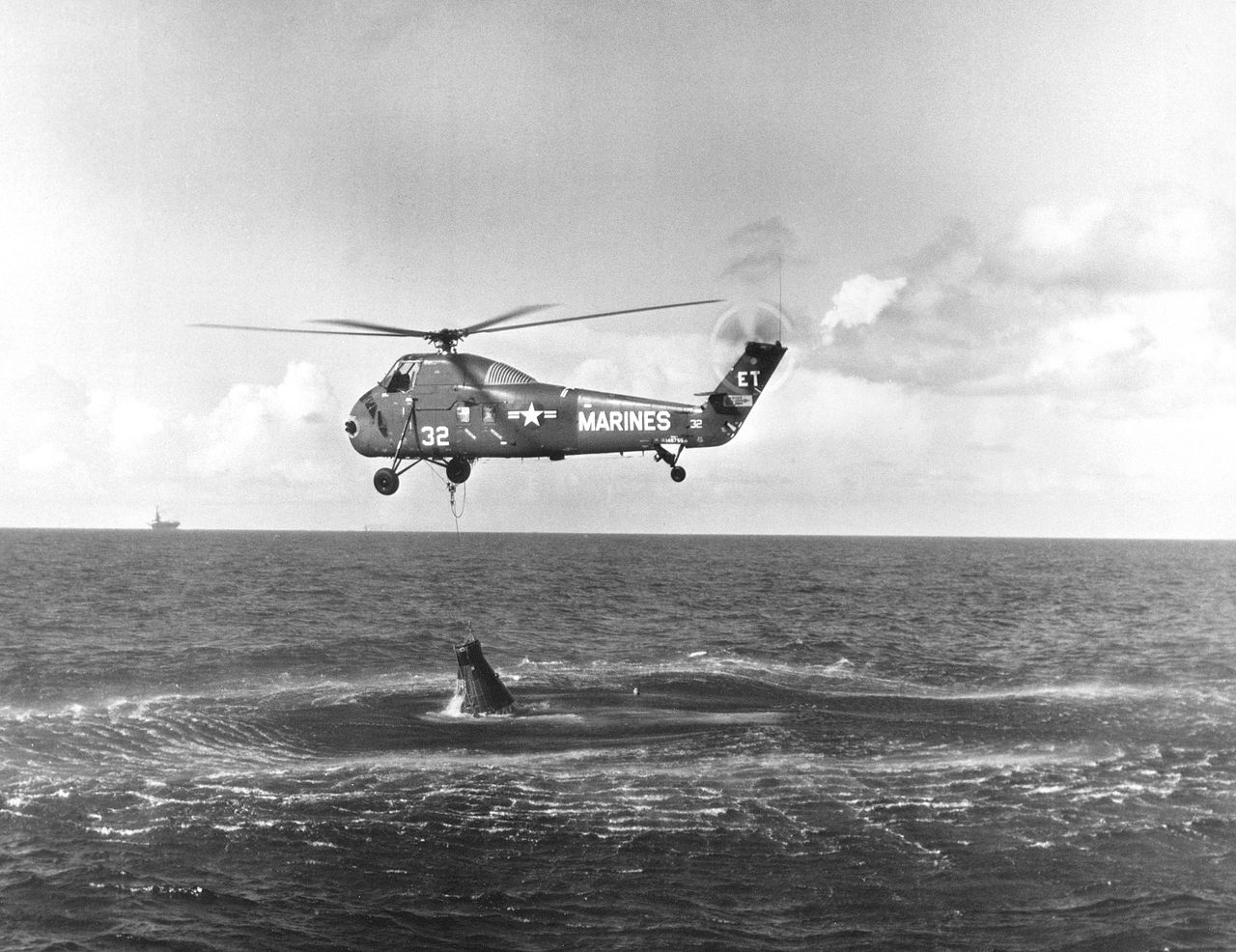
Virgil Ivan Grissom was born at Mitchell, Indiana, the second of five children. Upon graduation from high school during World War II, he enlisted in the U.S. Army. After the war, he went to Purdue University and earned a Bachelor of Science Degree in engineering, then joined the U.S. Air Force and was trained as a fighter pilot. He flew 100 combat missions in the North American Aviation F-86 Sabre during the Korean War. He attended a one year program at the Air Force Institute of Technology and earned a second Bachelor’s degree in aircraft engineering. Next he went to the test pilot school at Edwards AFB. After completion, he was assigned as a fighter test pilot at Wright-Patterson AFB.
One of 508 pilots who were considered by NASA for Project Mercury, Gus Grissom was in the group of 110 that were asked to attend secret meetings for further evaluation. From that group, 32 went on with the selection process and finally 18 were recommended for the program. Grissom was one of the seven selected.
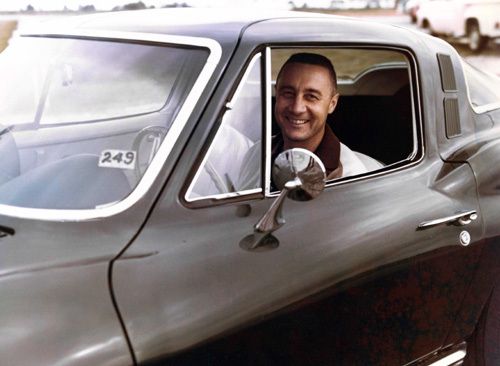
Captain Grissom was the second American to “ride the rocket.” He named his space capsule Liberty Bell 7. Next he orbited Earth as commander of Gemini III along with fellow astronaut John Young. He was back-up commander for Gemini VI-A, then went on to the Apollo Program.
As commander of AS-204 (Apollo I), LCOL Virgil I. Grissom, USAF was killed along with Ed White and Roger Chafee in a disastrous launch pad fire, 27 January 1967.
Gus Grissom was an Air Force Command Pilot with over 4,600 hours flight time. He was the first American astronaut to fly into space twice.
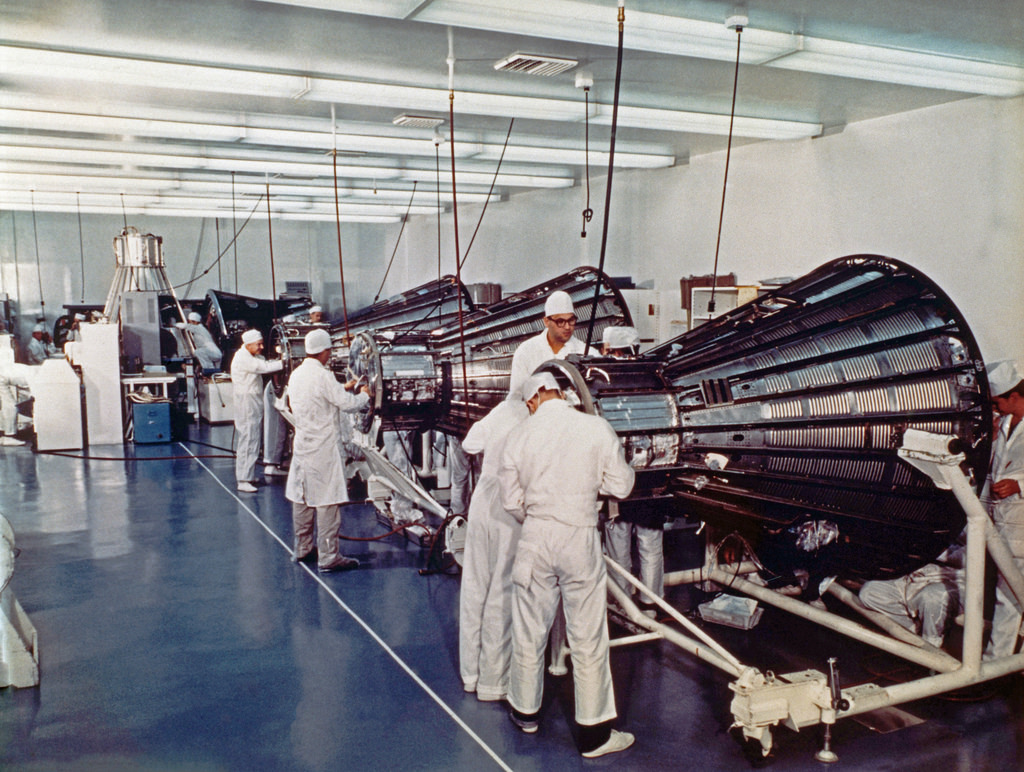
Liberty Bell 7 (Mercury spacecraft number 11) differed from Alan Shepard’s Mercury capsule with the addition of a large viewing window and a side hatch equipped with explosive bolts. There were also differences in the capsule’s instrument panel, as well as other improvements. The MR-4 capsule was delivered to Cape Canaveral on 7 March 1961. The space capsule was truncated cone with sides angled 20° from the longitudinal axis. It was 6 feet, 10 inches (2.083 meters) long and had a maximum diameter of 6 feet, 2.50 inches (1.892 meters). The total height of the spacecraft, from the tip of the aero spike to the booster adapter, was 26 feet, 1.26 inches (7.957 meters). At launch, Mercury 11 weighed approximately 2,835 pounds (1,286 kilograms), empty.
During flight outside the atmosphere, the Mercury spacecraft could be controlled in its pitch, roll and yaw axes by hydrogen peroxide-fueled reaction control thrusters. Both manual and automatic attitude control were available. It could not accelerate or decelerate (except for reentry) so it could not change its orbit.
The spacecraft cabin was pressurized to 5.5 psi with 100% oxygen. The pilot wore a B.F. Goodrich Mark IV Model 3 Type I full-pressure suit and flight helmet for protection in the event that cabin pressure was lost.
The Redstone MRLV rocket was a redesigned, “man rated” version of the Chrysler-built United States Army M8 medium-range nuclear-armed ballistic missile. More than 800 changes were made. It was lengthened 6 feet ( meters) to provide greater fuel capacity, which increased the rocket’s “burn time” by 20 seconds. A pressurized instrumentation section was added, the control systems were simplified for greater reliability, and an inflight abort sensing system was installed. The rocket fuel was changed from hydrazine to ethyl alcohol. The cylindrical booster was 59.00 feet (17.983 meters) long and 5 feet, 10 inches (1.778 meters) in diameter. The rocket had four guidance fins with rudders mounted at the tail section. (Interestingly, the Redstone stood freely on the launch pad. No hold-downs were used. The guidance fins supported the entire weight of the vehicle.) Six Redstone MLRBs were built for Project Mercury.
The Redstone MRLV was powered by a single NAA 75-110-A7 liquid-fueled engine built by the Rocketdyne Division of North American Aviation, Inc., at Canoga Park, California. The A7 produced 78,000 pounds of thrust (346.96 kilonewtons) at Sea Level, and 89,000 pounds (395.89 kilonewtons) in vacuum, burning ethyl alcohol with liquid oxygen.
The total vehicle height of Mercury-Redstone 4, including the booster, adapter, capsule and escape tower, was 83.38 feet (25.414 meters). The total vehicle launch weight was approximately 66,000 pounds (29,937 kilograms).
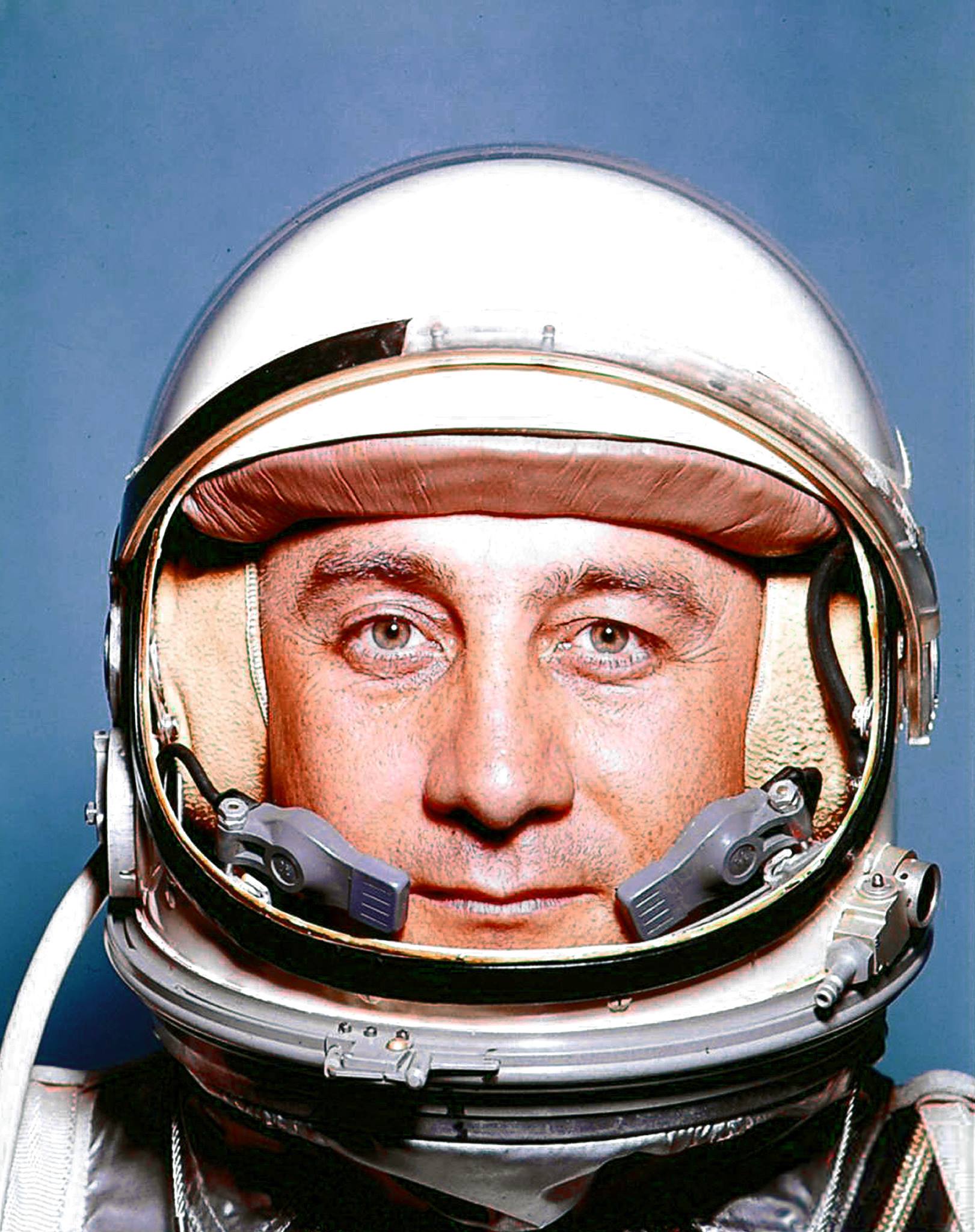
¹ “The mystery of Grissom’s hatch was never solved to everyone’s satisfaction. Among the favorite hypotheses were that the exterior lanyard might have become entangled with the landing bag straps; that the ring seal might have been omitted on the detonation plunger, reducing the pressure necessary to actuate it; or that static electricity generated by the helicopter had fired the hatch cover. But with the spacecraft and its onboard evidence lying 15,000 feet down on the bottom of the Atlantic Ocean, it was impossible to determine the true cause. [377] The only solution was to draft a procedure that would preclude a recurrence: henceforth the astronaut would not touch the plunger pin until the helicopter hooked on and the line was taut. As it turned out, Liberty Bell 7 was the last manned flight in Project Mercury in which helicopter retrieval of the spacecraft was planned. In addition, Grissom would be the only astronaut who used the hatch without receiving a slight hand injury. As he later reminded Glenn, Schirra, and Cooper, this helped prove he had not touched his hatch plunger.”
—This New Ocean: A History of Project Mercury, by Loyd S. Swenson, Jr., James M. Grimwood, and Charles C. Alexander. NASA Special Publication SP-4201, 1989
² After retiring from military service, Sikorsky HUS-1 Seahorse Bu. No. 147755 (redesignated UH-34D in 1962) was sold to the civil market, and was registered N4216H, 10 March 1981. It was owned by Orlando Helicopter Airways, Inc., Orlando, Florida. The FAA registration was cancelled in 2013. The status of the helicopter is not known.
© 2017, Bryan R. Swopes